Stanford’s Schools and Programs

Degrees
Stanford offers the following degrees: BA, BS, BAS, MA, MS, PhD, DMA, MD, MBA, MSM, JD, JSD, JSM, LLM, MFA, MLS, MLA, MPP, ENG
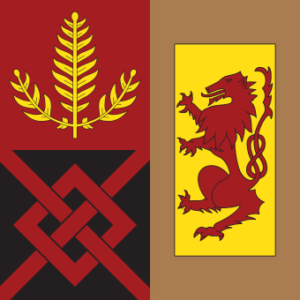
Graduate School of Business
Dean: Jonathan Levin
Stanford Graduate School of Business (GSB) empowers leaders to change lives, change organizations and change the world. Its faculty, including five Nobel laureates, conducts breakthrough research and engages with students in three degree programs: the two-year full-time MBA, one-year full-time Master of Science for experienced leaders (MSx) and PhD. The Executive Education portfolio includes more than 100 courses, both on campus and online. Stanford Seed is an initiative that partners with entrepreneurs in emerging markets to end the cycle of global poverty. Stanford GSB instills the courage to take risks, the passion to lead and the motivation to make a positive impact.
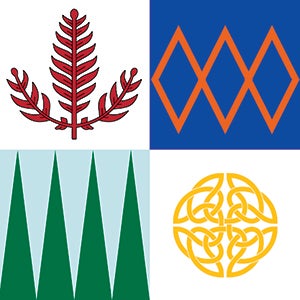
Stanford Doerr School of Sustainability
Dean: Arun Majumdar
The Stanford Doerr School of Sustainability draws on a deep understanding of Earth, climate and society to create solutions at a global scale, in collaboration with partners worldwide. The school strives to create a future where humans and nature thrive in concert and in perpetuity. The school includes a novel three-part structure with departments and programs to generate scholarship, institutes that innovate across disciplines, and an accelerator to drive policy and technology solutions to sustainability challenges. With more than 100 faculty, and nearly 1,000 students in six departments, one social sciences division and three interdisciplinary programs, the school brings together all areas of scholarship that, together, are crucial for advancing the long-term prosperity of the planet.

Graduate School of Education
Dean: Daniel Schwartz
The Graduate School of Education is the center of teaching and
learning at Stanford. With 400 graduate students, the school
prepares researchers, policymakers, entrepreneurs, executives
and school leaders. The GSE’s faculty draw from a variety of
disciplines to produce novel scholarship that shapes teaching
and learning worldwide. Faculty partner with schools, nonprofits
and governments to improve policies and practices and help
prepare all learners for a dynamic future. The GSE awards PhD,
MA, MS and MA with teaching credential degrees, as well as
joint degrees in public policy, law and business. It also offers an
undergraduate minor. The GSE houses the Stanford Accelerator
for Learning to scale effective and equitable learning solutions to
all.
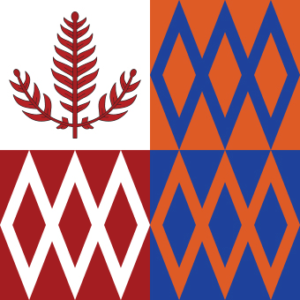
School of Engineering
Dean: Jennifer Widom
Stanford Engineering has been at the forefront of innovation for nearly a century, laying the technological and business foundations for what we now know as Silicon Valley and creating pivotal technologies that have transformed the worlds of information technology, communications, health care, energy, business and beyond. With nearly 5,000 graduate and undergraduate students and 280 faculty across nine departments and more than 160 laboratories, centers, institutes and programs, the school focuses on seeking solutions to important global problems and educating leaders who will make the world a better place by using the power of engineering principles, techniques and systems. The school aims to educate engineers who possess not only deep technical excellence, but the creativity, cultural awareness and entrepreneurial skills that come from exposure to the liberal arts, business, medicine and other disciplines that are an integral part of the Stanford experience.
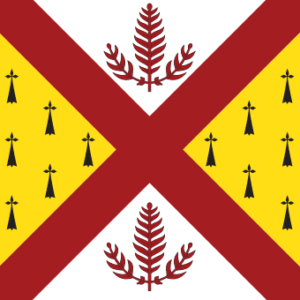
School of Humanities and Sciences
Dean: Debra Satz
The School of Humanities and Sciences is Stanford’s largest school. As the home of Stanford’s world-class liberal arts education, the school encompasses more than 45 departments and interdisciplinary degree programs that span the humanities, arts, languages and literatures, social sciences, mathematics, and the physical and life sciences. H&S enrolls more than 2,300 graduate students and more than 2,400 undergraduate students and has close to 600 faculty members. H&S serves as the foundation of a Stanford undergraduate education no matter which discipline students pursue as a major. The school is the university’s home for fundamental and applied research, where free, open and critical inquiry is pursued across disciplines. The school’s graduate programs lead to Doctor of Philosophy, Doctor of Musical Arts, Master of Arts, Master of Science, Master of Public Policy or Master of Fine Arts degrees.

Stanford Law School
Dean: George Triantis
Stanford Law School combines classic and innovative legal education, with approximately 70 faculty members and 180 new JD students annually. The student-to-faculty ratio is 4.6 to 1. The school offers 24 joint degree programs in areas ranging from bioengineering to business to public policy. Eleven clinics allow students to undertake the roles of practicing lawyers, and 25+ academic programs and centers and about 20 policy practicums offer opportunities for research and policy work.
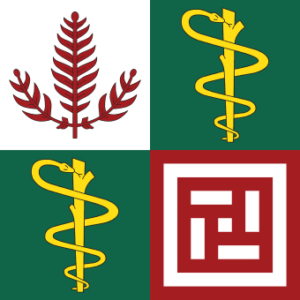
School of Medicine
Dean: Lloyd Minor
The School of Medicine, the oldest medical school in the western United States, encourages intellectual diversity in students interested in developing a scholarly, investigative approach to problems in medicine and science and using discoveries to transform patient care. The school has 1,137 faculty; 1,890 clinician educators; 1,502 postdoctoral scholars; 490 MD students; 1,222 PhD and MS candidates; and 1,471 residents and clinical fellows. The school’s world-class faculty, which includes five Nobel laureates, are leaders in research, patient care and education. Our medical students gain experience at Stanford Hospital and Stanford Health Care, Lucile Packard Children’s Hospital Stanford and Stanford Medicine Children’s Health, Palo Alto Veterans Affairs Medical Center, Santa Clara Valley Medical Center, and other affiliated sites, including the VA Palo Alto Health Care System. The School of Medicine received $866 million in sponsored research revenue as of 2022 and $584 million in NIH funding as of 2022.
Other Academic Programs
Stanford Digital Education
Vice Provost for Digital Education: Matthew Rascoff
Stanford Digital Education leads the development of Stanford’s online and hybrid education strategies and strengthens Stanford’s capacity to carry them out. It incubates and supports mission-driven digital education initiatives, while also serving as the entry point for groups outside the university wishing to partner on such efforts. By marshaling Stanford’s human and technological capabilities in new ways, Stanford Digital Education seeks to build a more just, equitable and accessible system of higher education.
Stanford Center for Professional Development (SCPD)
Executive Director & Associate Dean: Carissa Little
The Stanford Center for Professional Development (SCPD) is the global and online education unit within Stanford Engineering. SCPD works closely with Stanford faculty and instructors to create credentialed education programs that are delivered online, in person or part time, including graduate degree and credit-bearing certificate programs; professional education and enterprise learning; and lifelong learning. SCPD operates Stanford Online, the online portal for academic and professional education offered by schools and units throughout Stanford University. SCPD has been a leader in global, online and extended education since 1995, helping the School of Engineering deliver the world’s first online streaming master’s degree in engineering in 1998 and later Stanford’s first credentialed professional education programs. SCPD has served over 10 million learners.
Distinguished Careers Institute
Interim Faculty Director: Sara Singer;
Executive Director: Katie Connor
The Stanford Distinguished Careers Institute (DCI) provides a unique opportunity for accomplished individuals in midlife to redefine purpose, build community and recalibrate wellness, in order to flourish and contribute in their next chapter. Over 380 fellows and alumni, representing a diverse global community, bring a wide range of talents, expertise and connections to Stanford. DCI fellows work and learn with students and faculty in the classroom and in Stanford’s many centers, institutes and programs and welcome the opportunity to serve as mentors and project partners on student projects and entrepreneurial ventures.
Executive Education
Associate Dean: David Kang
Stanford Graduate School of Business executive education offers individuals and companies in-person and online programs, along with blended learning that includes both face-to-face and online components, to enhance leadership skills, build foundations in general management, and build connections to a global network of peers.
Stanford Online High School
Head of School: Tomohiro Hoshi
Stanford Online High School (OHS) is a highly selective independent school with real-time, online seminar-style classes for students in grades 7-12. Founded in 2006, Stanford OHS is the leader in online education, bringing together a global community of diverse, intellectually curious students, expert instructors and supportive staff. Stanford Pre-Collegiate Studies, a division of Stanford OHS, offers academic enrichment outreach programs including Stanford Pre-Collegiate Summer Institutes, Stanford Summer Humanities Institute, Stanford University Mathematics Camp, Stanford Middle School Scholars Program and Stanford Math Circle.
Stanford Continuing Studies
Dean: Daniel Colman; Director and Associate Dean: Jennifer Deitz
Continuing Studies offers approximately 650 courses per year, attracting more than 17,000 lifelong learners. Courses in liberal arts and sciences, wellness and health, creative writing, and professional development are offered both on campus and online. Continuing Studies courses are open to adult learners everywhere.
Accreditation
Stanford University is accredited by the Accrediting Commission of Senior Colleges and Universities of the Western Association of Schools and Colleges.
Growth of Academic Council* and Student Body
| Undergraduate Students | Graduate Students | Academic Council | |
|---|---|---|---|
| 1900 | 1,055 | 114 | 75 |
| 1910 | 1,498 | 157 | 112 |
| 1920 | 2,165 | 283 | 150 |
| 1930 | 3,103 | 1,530 | 271 |
| 1940 | 3,460 | 1,782 | 309 |
| 1950 | 4,805 | 2,907 | 372 |
| 1960 | 5,648 | 4,208 | 619 |
| 1970 | 6,221 | 5,217 | 1,029 |
| 1980 | 6,630 | 6,236 | 1,230 |
| 1990 | 6,555 | 6,886 | 1,340 |
| 2000 | 6,548 | 7,700 | 1,368 |
| 2010 | 6,895 | 8,870 | 1,468 |
| 2015 | 6,994 | 9,196 | 1,651 |
| 2016 | 7,032 | 9,304 | 1,659 |
| 2017 | 7,056 | 9,368 | 1,667 |
| 2018 | 7,083 | 9,437 | 1,681 |
| 2019 | 6,994 | 9,390 | 1,701 |
| 2020** | 6,366 | 8,791 | 1,711 |
| 2021 | 7,645 | 9,292 | 1,692 |
| 2022 | 7,761 | 9,565 | 1,703 |
| 2023 | 7,841 | 9,688 | 1,730 |
* Includes tenure-line faculty, non-tenure-line faculty and senior fellows at specified policy centers and institutes. Academic staff—teaching, center fellows and Medical Center-line faculty—are not members of the Academic Council.
** Enrollment decreased due to pandemic-related gap year requests.